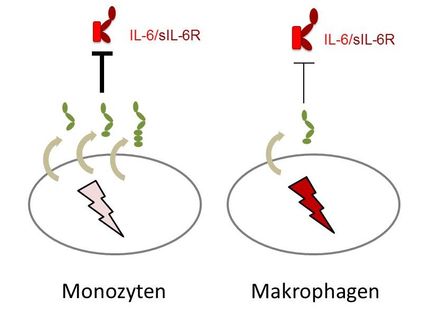Mouse gene shows new mechanism behind cardiac infarction in man
Advertisement
A gene that, in different variants, increases or decreases the level of atherosclerosis has been identified in mice. The corresponding human gene has been shown to play a role in the development of myocardial infarction.
Researchers at Karolinska Institutet, in collaboration with the Jackson Laboratory in the USA, AstraZeneca and a Japanese research group, have scrutinised an area on chromosome 1 that is of demonstrable importance to the development of arteriosclerosis. The TNFSF4 gene was identified as the one responsible, as mice with mutations in this gene displayed a lower degree of atherosclerosis, while mice with more active variants of the gene displayed the opposite.
Studies of two patient groups revealed that a certain variant of the human homologue of the gene was more common in people who had a history of cardiac infarction than those without.
"This is an example of how an unbiased genetic strategy based on a mice model can teach us more about common human diseases," says researcher Jacob Lagercrantz of the Gustav V research institute, Karolinska Institutet.
The gene codes for a protein called OX40L, which is involved in the activation of immunological T cells. These cells, in turn, play an important role in the pathogenesis of atherosclerosis and of a number of chronic inflammatory diseases. The new finding will spur further research into the relationship between the protein and cardiac infarction. Hopefully it will offer a new therapeutic technique for the treatment of atherosclerosis and thus reduce the risk of cardiac infarction.
Publication: X. Wang, M. Ria, P.M. Kelmenson, P. Eriksson, D.C. Higgins, A. Samnegård, C. Petros, J. Rollins, A.M. Bennet, B. Wiman, U. De Faire, C. Wennberg, P.G. Olsson, N. Ishii, K. Sugamura, A. Hamsten, K. Forsman-Semb, J. Lagercrantz, B. Paigen; "Positional identification of TNFSF4, encoding OX40 ligand, as a gene that influences atherosclerosis susceptibility."; Nature Genetics Online 2005.
Topics
Organizations
Other news from the department science

Get the life science industry in your inbox
By submitting this form you agree that LUMITOS AG will send you the newsletter(s) selected above by email. Your data will not be passed on to third parties. Your data will be stored and processed in accordance with our data protection regulations. LUMITOS may contact you by email for the purpose of advertising or market and opinion surveys. You can revoke your consent at any time without giving reasons to LUMITOS AG, Ernst-Augustin-Str. 2, 12489 Berlin, Germany or by e-mail at revoke@lumitos.com with effect for the future. In addition, each email contains a link to unsubscribe from the corresponding newsletter.


























































